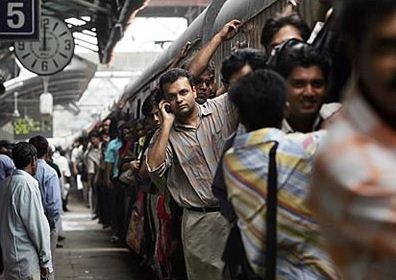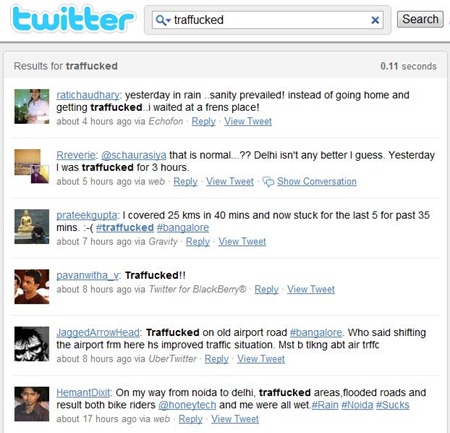How much Time do You Spend in Travelling – Average Indian spends about 90 mins a day
A popular cliché that relates with Mumbaikars is that working professionals spend almost a quarter of their life commuting through the crowded local trains/buses.
Indeed, Mumbai is unique. Unique in the sense that – every morning there are over 10 million train commuters and bus passengers making interminable trips to offices mostly located in the South Mumbai. Eeh!… Not to forget about the return journey for the same herd towards the other pole, at dusk of the day.
Thankfully, the other side of Mumbai, the Vashi-Panvel zone, is developing by leaps and bounds and is acting fruitfully in cutting the commuting time and diverting traffic, at least partially – for a target group of people working across the belt. However, Mumbaikars still spend maximum time commuting, over their counterparts in other major metros, thanks to the massive traffic hurdles in the city.

Having said that, long-distance commuting is still the norm with as much as 26% public in India still travelling over 90 minutes everyday. Moreover, a survey points out that the average commuting length in India is 29 minutes, but a minority 12% of commuters travel more than an hour, up and down, which afflicts pain and an unproductive wastage of time.
In India, only 67% of the respondents owning a car asserted at driving to work. In my opinion, this could be on account of major traffic snarls (if you are on twitter I am sure you heard the word “traffucked”) during the peak morning and evening evening; not to mention the woes of car parking and related costs. Globally, cars are most popular form of commuter transport.

The solution to problem of longer commuting hours certainly lies in easing of traffic snarls powered by well-designed infrastructural facilities, including multi-level car parking slots for the private vehicles.
In fact, speedy execution of ongoing projects related to roads and over-bridges could in itself serve the redressal to these traffic congestion issues. Announcements related to building of Flyovers provide visible symbols of achievement, and the government in power doesn’t want to be left behind in a want to score a brownie point in terms of project implementation – but, what about the executing them?
One can easily determine the above political drama – once stuck in the narrow streets of a metro city, clogged by traffic nightmares, over where one end of the road stays dug by local authorities while on the other side heavy construction related to the building of flyovers take place.
Aware about these unavoidable circumstances, most of the IT and call-centre companies situated in Mumbai are shifting their locations to distant suburbs such as Powai, Vashi and Thane among others, in a bid to come closer to the residence areas of the employees to save time, money and efforts involved in ferrying them, to and fro, from the office premises. Additionally, it also saves the company from the payment of exorbitantly high rental or acquisition costs involved in dealing with expensive commercial property prices in prime business locations.
So what about you ? How time do you spend traveling every day ?

[…] implementation of technology that solves big problems around us. Traffic jams have always been one such problem that needs technology […]
I agree all your comments and i feel that first of all we lack common sense in following traffic rules. even every one of us used to jump signals, not following traffic rules etc. Moreover our system of infrastructure is also not good , i am from Bangalore, i used travel daily on a particular road where i have face railway gate which is normally closed for 5 to 10 minutes. as the gate opens,I observed that every one of us wanted overtake other and finally ending up in huge traffic jam for almost half an hour to one hour. the observations which i have find out is that the condition of road is very bad which slows down the vehicle movement for almost one minute per vehicle, we can calculate what could be the impact on the last vehicle which is in Que.
I have some suggestions; Please follow traffic rules, develop infrastructure, and have common sense while driving
At Macro level central/State govts have to look into the following :
1. Eliminate migration by many possible ways (emcourage livelyhood for rural in their place itself by industry, business or any means)
2. Eliminate vehicle loans. In fact govts have to realise that vehicles are not priority area. The interest should go up to discourage people to buy vehicles. Any tom, dick and harry having 1000 rupees in his pocket walks into loan mela conducted by bike sellers and rides out with a brand new bike. All this bike melas are contributing to traffic slowdowns, idle fuel burning at signals and causing loss to nation. Govt should decide if anybody wanting to buy vehicle has what we call “Auqaat” then only allow them to buy.
3. Encourage mass transport. Metro rail systems do not have traffic jams so they are fuel efficient. They transport max man-km per liter than any means of transport known to man. The low cost of transport should be passed on to commuters in the form of low cost of ticket thereby encouraging more of them to take to rail system (once again increasing efficiency)
4. Cities should have seperate lanes for 2 wheelers (both bicycles and bikes). This will drastically reduce slowness of traffic. Right now the car driver is slowing down once he see a biker as he dont know what the biker will do next moment. Once bikers are seperated from main roads, the speed automatically increases of rest of the traffic. Bikers even when in seperate lane can maintain their own speed due to their road skills so nobody looses.
5. Traffic police should be encouraged to penalize traffic offenders by offering them % of the penalty. (This system works beautifully in GCC). So for traffic police, salary is not the only incentive to work sincerely.
Some of the above may look radical but with out radical reforms we can not hope to have sanity on indian roads.
Hyderabad is no better.
In addition to already small roads, people never heard of following traffic lanes. A road for them is any flat area on which the vehicle can operate. Vehicles ply on side walks (two wheelers) and stalls kill the side walks and pedestians are forced to walk on roads further slowing down traffic. The scene does not justify the place to be called a city. Looks like an overgrown village.
Already the metro rail project was mired in scandal with govt cancelling the award to Mytas and reawarding to L&T last month. I hope when the metro comes up (in 5 yrs time probably) things will improve.
People travel almost 20 km to work place and 20 km back (almost 2 hrs both ways)
Rightly point out by you Altaf… Improper/inadequate parking lots and hawkers penace could as well add to the bug, not to mention macro projects like Metro railways, which extend for longer durations than actually scheduled.
Altaf,
Pune is no different…there is absolutely no road sense…anyone will come from anywhere at anytime, without bothering about the vehicle behind or ahead of them..Even a 15 min ride here becomes stressful to me…
Infact, many times I find myself pulling out my hair looking at people weaving through the traffic. I can seriously go on and on…But suffice to say, majority of people on road behave as if they are walking in the corridor of their house….
@Arun… In my opinion, one thing that could be choking Pune is excessive number of 2-wheelers that ferry on the streets, relative (not comparatively) to Mumbai.
One reason for this could be triggering this far more usage of 2-wheelers could be limited mode of public transport in Pune (mostly only buses), as against bus and (life-line) trains in Mumbai.
This leads to more people vying for a private vehicle in Pune, be it 2-wheelers or 4-wheelers, What say? :)
I like to tell about chennai,yes i know mumbai is having larger population but in chennai also we are facing the same problem mainly in koyembedu,metro rail project and bridge project are undergoing parallely, it makes a big traffic jam as we people struck and we wait for nearly 15 to 20 mins for passing a single signal .we are totally stressed,thanks for the great updation.
Agreed Navsingh… the snarls are catching up across many cities in the country, what with various developmental projects going on uniformly.
Somehow these projects need to be properly integrated with the other concurrently running ones, so that the going remains relatively smooth for the larger public.
Thanks for your valuable feedback & informing about the situation in yet another metro city – Chennai :)